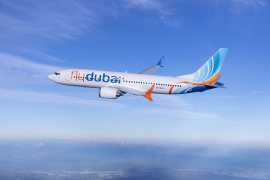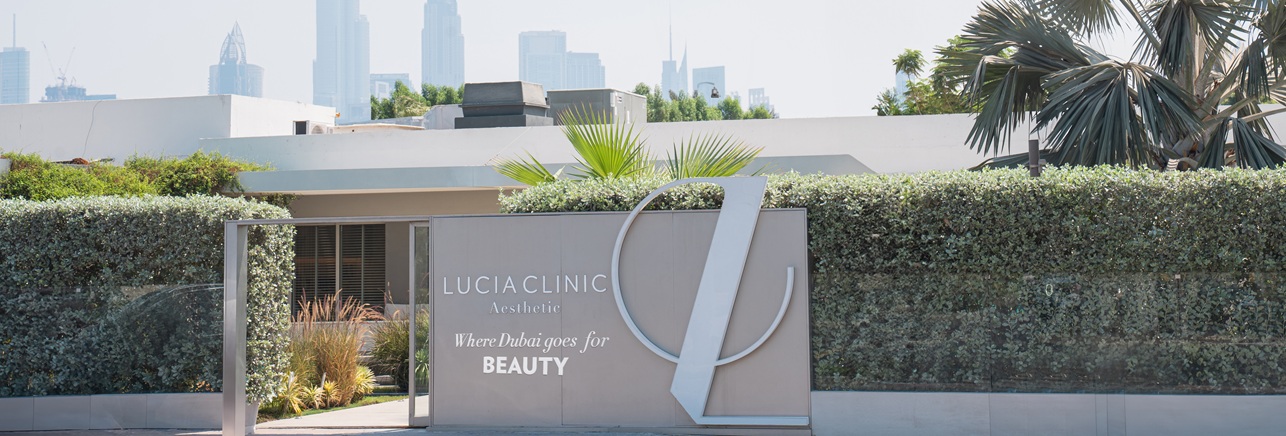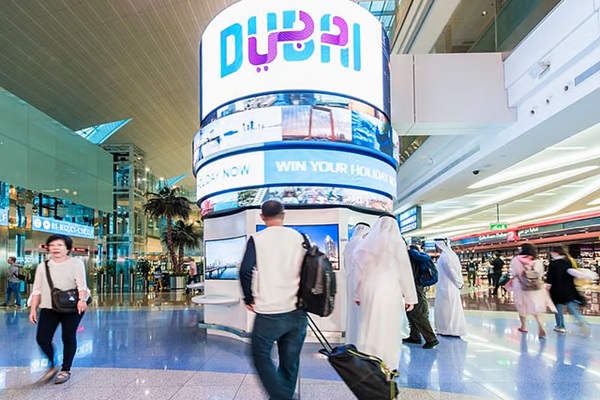flydubai reports full-year results for 2017
Back To Main Page: Airlines News

Highlights for Full-Year Results 2017
- flydubai has today, 21 February 2018, announced its Full-Year Results for the year ending 31 December 2017.
- flydubai reports total revenue of AED 5.5 billion (USD 1.5 billion) compared to AED 5 billion (USD 1.37 billion) last year; an increase of 9.2% compared to the same period reported in last year’s results.
- Reports a profit of AED 37.3 million (USD 10.1 million); the airline has continuously reported Full-Year profitability since 2012.
- The aviation sector continues to be a key contributor to the development of the business landscape in support of international trade links.
- Carried 10.9 million passengers – a record number for the airline. Passenger numbers grew by 5.5% compared to the previous year.
- With up to 295 aircraft on order flydubai becomes one of the world’s top ten airlines in terms of order backlog. Represents the scale of the ambition planned for the airline.
Statements on the Annual Results
Commenting on the announcement of the airline’s Full-Year Results for 2017, His Highness Sheikh Ahmed bin Saeed Al Maktoum, Chairman of flydubai, said: “the Results announced today demonstrate the key role that flydubai continues to play in the development of trade and tourism in the UAE. 2017 also saw flydubai place its third and largest aircraft order illustrating its contribution to Dubai as a centre of aviation and represents the scale of the ambition planned for the airline.”
Commenting on the expanded codeshare announced last year, His Highness Sheikh Ahmed bin Saeed Al Maktoum, said: “in its early stages, the partnership with Emirates has enjoyed a significant response from passengers who recognise the benefits of travelling around the world on a single ticket. As the opportunities presented by the codeshare progress it will create new passenger flows going forward.”
Ghaith Al Ghaith, Chief Executive Officer of flydubai, commenting on the financial and operational performance of the airline, said: “the oil price continues to shape the business landscape and it remains a fine balance between fares, yields and passenger growth. Despite the socio-economic environment we have seen across our network, we have record numbers of passengers travelling with us as well as sustained growth in our revenue.”
Looking to the year ahead, Al Ghaith, added: “the introduction of new and more fuel efficient aircraft into our fleet will be a positive influence and we will see greater benefit as more Boeing 737 MAX 8 aircraft join the fleet. We know how important aviation is to the business landscape and we remain confident about the road ahead.”
Arbind Kumar, Senior Vice President, Finance of flydubai, said: “our persistent and rigorous approach to cost management continues to ensure that the business remains robust to support our sustainable growth over the next few years.”
Cost and revenue performance
- EBITDAR[1] was 23.6% of revenue; an improvement of the previous year’s figure of 21.1%.
- Closing cash and cash equivalents position, including pre-delivery payments for future aircraft deliveries, is AED 2.4 billion compared to AED 2.3 billion last year.
- Fuel costs were 25% of total operating costs; the same as last year. Hedged fuel was 12% of total volume compared to 21% last year.
- Ancillary revenue comprising baggage, cargo and inflight sales contributed 11.9% of revenue compared to 13.8% last year.
Operational Results
- Efficient fleet management: Eight new aircraft joined the fleet including two Next-Generation Boeing 737-800 and six Boeing 737 MAX 8 aircraft. For the first time since the airline was launched in 2009, the airline retired four aircraft in line with its fleet management policy to maintain a young and efficient fleet.
- Sustained network expansion: flydubai continues to closely monitor and assess the performance of its route network. In a changing socio-economic environment, flydubai is responsive to changing market dynamics and remains flexible in its approach to adjusting capacity. Its objective is to maintain a strong route network and increase passenger flows in support of sustained growth within its geographic flying radius. It will continue to review the performance of its schedule and routes ensuring that its network is performing at optimal levels. This approach is reflected in the growing traffic figures reflected in the following market performance:
- flydubai contributed 27% of the total growth at Dubai Airports for the GCC market; contributing 29% of overall traffic to the region.
- flydubai increased the number of passengers carried from its 11 points in Russia by 44%.
- flydubai contributed 93% of the total growth at Dubai Airports for Central Asia (Kazakhstan, Kyrgyzstan, Tajikistan and Turkmenistan) and contributed 54% of overall traffic to the region; reporting 8% growth over 2016.
- flydubai contributed 78% of the total growth at Dubai Airports for the Caucasus (Armenia, Azerbaijan and Georgia) and contributed 74% of overall traffic to the region.
- flydubai contributed 11% of the total growth at Dubai Airports for Europe.
- flydubai contributed 11% of the total growth at Dubai Airports for the Subcontinent.
- flydubai accounted for 1.4% of growth in passengers travelling between Dubai and India representing 4.4% of the whole market between Dubai and India.
- flydubai contributed 13% of the total growth at Dubai Airports for the African market in 2017; contributing 10% of overall traffic to the region.
- Aircraft financing: the airline closed two financing structures to support the introduction of the Boeing 737 MAX 8 aircraft into its growing fleet: a Japanese Operating Lease with a Call Option (JOLCO) was used for the first time to finance this aircraft type and an Aircraft Finance Insurance Consortium (AFIC) insured debt financing structure was used for the first time in the region.Two awards were presented to the airline for the JOLCO
- Dubai-hub: flydubai has announced it is investing in a new headquarters building to support its continued growth and development. The airline continues to study ways to improve the efficiency of its operations at Dubai International and is further looking to improve connectivity. flydubai has been operating from DWC since October 2015. With its two gateways, flydubai will, over the next few years, continue to gradually increase its operations at Al Maktoum International (DWC) in line with its future aircraft deliveries, network expansion plans and the next phase of the development of the airport.
flydubai Cargo supporting trade links: in an airfreight market that remained challenging with fast-changing demand patterns flydubai Cargo became the first airline to use blockchain technology in the airfreight industry. In addition, the airline continues to only use electronic Air Waybill (e-AWB).
Key Financial and Operational Results
|
|
31 December 2017 |
31 December 2016 |
|
RPKM[2] (% growth) |
12.7% |
16.7% |
|
ASKM[3] (million) |
27,851 |
25,995 |
|
Passenger numbers (million) |
10.9 |
10.4 |
|
Fleet size (no. of aircraft) |
61 |
57 |
|
Average aircraft age |
3 years 11 months |
3 years 8.5 months |
|
Contribution to total growth at Dubai Airports (per cent) |
14.2% |
21.0% |
|
Aircraft Utilisation – average block hours per aircraft per day |
13.3 |
13.5 |
|
Total Departures |
86,013 |
88,114 |
|
Morning Push On time <30 minutes |
90.9% |
90.5% |
|
Departure On time <30 minutes |
85.8% |
85.5% |
|
Arrival On time <30 minutes |
85.1% |
84.5% |
|
Total staff numbers |
4,016 |
3,773 |
Outlook for 2018
Looking ahead, flydubai has announced the launch of 10 routes which will start operations during the first six months of 2018 and will further enhance connectivity across its network.
The airline will take delivery of seven aircraft during the course of the year. In line with its strategy to maintain a young and efficient fleet, these aircraft will support flydubai’s continued growth as well as replace four aircraft in the fleet which will be retired. Positive feedback has been received by customers following the introduction of the Boeing 737 MAX 8 aircraft into the fleet. The airline will take delivery of its first Boeing 737 MAX 9 aircraft. These aircraft will bring more efficiencies to the fleet as they become available on more routes.
Although the operational climate has remained challenging, flydubai is cautiously optimistic about 2018. Furthermore, its partnership with Emirates, which has already been well received by passengers, will create additional opportunities. Its strategy to open up previously underserved routes, the creation of new direct airlinks, its efficient and flexible business model will ensure flydubai is best positioned for the year ahead.
[1] EBITDAR is calculated as earnings before interest, taxes, depreciation, amortisation and rental costs
[2] RPKM Revenue passenger kilometre
[3] ASKM available seat kilometre
About flydubai
About flydubai
Dubai-based flydubai strives to remove barriers to travel and enhance connectivity between different cultures across its ever-expanding network. Since launching its operations in 2009, flydubai:
- Created a network of more than 100 destinations in 47 countries.
- Opened up more than 70 new routes that did not previously have direct air links to Dubai or were not served by a UAE national carrier from Dubai.
- Operates a single fleet type of 61 Boeing 737 aircraft
In addition, flydubai’s agility and flexibility as a young airline has enhanced Dubai’s economic development, in line with the Government of Dubai’s vision, by creating trade and tourism flows in previously underserved markets.























